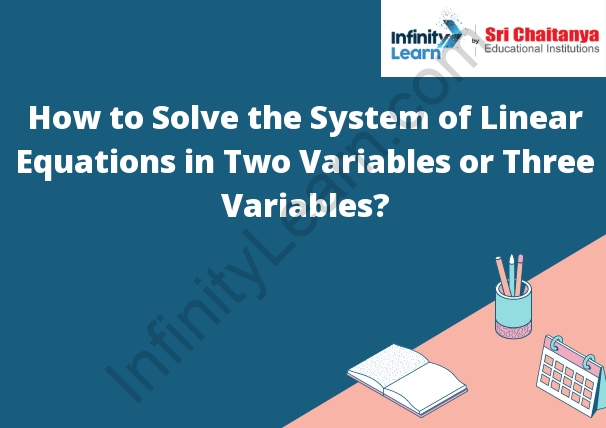
Linear differentiation equation is a form of the equation that is linear polynomial in nature. It is a part of the new derivatives and functions of an equation within a structure. A linear equation usually consists of derivatives of multiple variables. When a result and variable is partial, then it is also stated as a linear partial differential equation.
Let’s take an example where the linear equation is in one variable 4x = 2x + 2. A student can quickly figure out that the value of x here is one. When using matrix inverse to solve a system of 3 linear equations, simultaneous concepts are employed to find variables. If a linear equation consists of several variables, then ways to solve using the inverse matrix becomes complex.
This section tries to clear the concepts of applying matrix inverse methods for solving a system of equations. These concepts have been explained in detail with examples for an easy understanding.
By understanding the concepts, students will know how to use the given inverse to solve the system of equations.
How to Use an Inverse Matrix to Solve the System in Linear Equations
Here is a detailed explanation on the way to use an inverse matrix to solve the linear system.
Equations needed to solve using inverse matrix require a system like-
- e1x+f1y+g1z=d1
- e2x+f2y+g2z=d2
- e3x+f3y+g3z=d3
Students will see that here d1, d2, d3 don’t have the value as zero
If we take A as | |e1e2e3f1f2f3g1g2g3||e1e2e3f1f2f3g1g2g3| |
Now we can consider B’s value to be ||XYZ||XYZ| |
And C here is ⎡⎣⎢d1d2d3|] |
Ideally, when taking the inverse matrix to solve a linear system, one requires a coefficient matrix. Here B can be considered as a coefficient of a linear system.
This makes the following equation as ||e1e2e3f1f2f3g1g2g3||e1e2e3f1f2f3g1g2g3|| xyz ||d1d2d3||d1d2d3||
By considering the above system, one can conclude the equation of a system to be Ax = B
This further gives two visuals or cases that can be explained when one uses inverse to solve a system of equations.
Visual 1: Here one can see that A is a matrix in the non-singular form
We know that the value of a matrix’s determinant is not zero. This fact proves that the inverse of a matrix subsists in an equation.
Following the above-said statement, we find Ax = B
To find the ultimate value, we multiply both of its sides with A-1
This gives the value A-1(Ax) which is equal to A -1B
Finally using associative property, it gives (A-1A) x which is again equal to A -1B
Ultimately, the value of x will be A-1B
Here an individual can find an exclusive solution due to the inverse nature of the matrix in a linear equation.
Visual 2: In the second visual we see A as a singular matrix
It is known that a singular matrix has a value zero in case of determinants. Therefore, the value of adjacent (A)B will be found.
Here adjacent (A)B is not equal to 0, which makes the solution to be void making an equation of a system to be inconsistent.
Suppose there is a case where adj (A)B is equal to zero, which gives the value of a linear equation to be consistent or inconsistent. This can be based on multiple solutions or lack of one.
Apart from solving systems using inverse matrices, students need to practice equations based on linear equations. They should follow quality test papers and exercise materials, offering multiple questions on the inverse method to solve the system of equations.



